The Importance of PCB Power Relays in Circuit Control
March 9, 2023
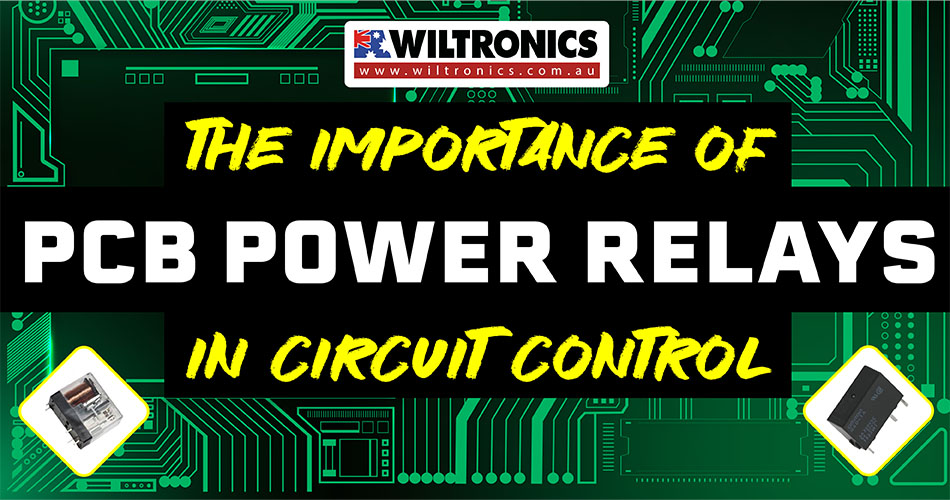
What makes PCB Power Relays a must-have in a wide range of electronic systems?
The reliable operation of circuit control systems is essential to any electric setup. This includes 1.) control of power, 2.) protection from short circuits and overloads – and more. Special components also play a part in achieving efficient performance and user safety. Among them are PCB Power Relays.
This article looks at how PCB Power Relays help maintain that upright functionality.
What Are PCB Power Relays?
Plenty of circuit processes happen in printed circuit boards, aka PCBs. This can range from simple data transmission to communication, depending on the PCB type. If you are an enthusiast, it helps to understand what PCBs are and the relay activities in a circuit.
All electronic components need power to operate. A relay, an electromechanical switch, can provide that power for smooth circuit running. However, power surges or faults happen; if missed, this can cause damage and hazards. The best way to ensure your devices remain safe from such cases is to rely on PCB Power Relays.
A PCB relay mounts directly on a circuit board, protecting it from electrical risks. It has high voltage ratings, with one or more relays for control of the electric current flow.
Thus, PCB relays are used whenever there is a need to manage a high-voltage circuit. For instance, as a switch on a load, such as in lights or motors. When used properly, they can reduce the risk of electric shock or even fire over a wide range of devices.
Moreover, they function like any other relay, but they are more compact and have higher ratings. They also come in any of the standard constructions you would find in larger models, like:
- Overcurrent. PCB Power Relays open can stop high currents from flowing in the wrong direction in a circuit.
- Semiconductor. It controls and manages the electric current flow in equipment and devices.
- Time delay. This enables the relay not to activate right away when energised. Instead, the in-built time delay function will wait a set amount of time before doing so.
- Thermal. It switches actions by reacting to temperature changes and shifting contact positions.
- Differential protection. When two circuit parts have different V or I, this triggers.
- Frequency protection. Trips when the frequency of an AC is too high or low.
An extra benefit of PCB relays is galvanic isolation. This prevents DC and unwanted AC currents between two parts of a system. At the same time, enabling signal and power transfer. This feature is also not available with transistor-based switching.
The Importance
The most basic function of a PCB power relay is to open or close circuits. It can respond to signals from a controller, allowing current to flow between two points on the PCB. Without this capability, much of today’s sophisticated automation would be impossible.
For instance, controlling the movement speed of a robot arm. You will need to use different electrical signals at varying times. This is where PCB Power Relays come in. They act like a gateway between electrical signals. This controls the robot arm and the physical motion of the arm itself.
Another application is in electric motor drive systems. Motors require switched currents at different levels depending on demand. With no relay system in place, surge protection could become overloaded. But by using a relay system, it can control the current flowing through these elements. As a result, you can maintain safe operation for longer periods without risk of damage.
Besides their use in complex automation systems, they also work for simpler operations. This includes controlling alarm systems triggered by low-voltage conditions. Or switching out devices when a voltage level drops below a certain threshold.
How Do PCB Power Relays Work?
PCB relay circuits come in a diverse range. Starting from reed and electromagnetic to hybrid, thermal, and solid-state relays. They get classified by construction, mounting type, or function.
The relay itself functions as a form of “switch” that allows for current to flow through the circuit. Overall, a PCB power relay works by opening or closing an electrical circuit. This allows for electricity to flow through it safely.
When electricity enters the relay from one side, it activates a switch that creates two paths. One for electrical current to pass through and another for it to bypass the system. This way, when you want to turn something ON or OFF, you can do so with minimal risk of electric shock or fire hazards.
Aside from controlling power, some PCB power relays also feature additional functions like:
- Operating temperature range management
- Voltage protection features
These allow for further protection against damages due to excessive current flow levels.
Common Applications
Many industries utilise PCB Power Relays, including the following:
- Industrial. Equipment includes machine tools, moulders, welders, mounters, and industrial robots.
- Household. Devices like UPS, switching power supply, and remote controls.
- Factory Automation (FA). PV Inverter, EV Charger, and industrial air conditioner.
Power relays are also used in automotive, control, power, safety, and signal systems. In building systems, they can be mounted in elevator control subsystems and more. In HVAC, power PCB relays are used in thermostats, electric boilers, and general pumps, to name a few.
And in lighting systems, inrush power relays are especially suitable for LED lighting. Other applications include movement detectors and bus system actuators.
Types of PCB Power Relays
SPST
A ‘single pole, single throw’ denotes single pole throw, hence the name. It contains two terminals that can get disconnected or connected.
SPDT
The ‘single pole, double throw’ has one terminal that connects to one of the other two. If you include the two that account for the coil, the relay has five terminals.
DPST
Stands for double pole, single throw. The DPST has two terminal pairs and equates two of the SPST relay actuated through one coil. If you include the two, it possesses a total of six terminals.
DPDT
The ‘double pole, double throw’ has two change-over terminal rows. It corresponds to two SPDT relays activated through one coil. It contains eight terminals overall.
Sourcing for PCB Power Relays
Here is a list of factors you need to consider when looking for the right PCB power relays:
1. Size and space
The size and shape of a PCB not only determine the cost but can play an important role in how well a circuit functions.
If too large, it may reduce space efficiency and make it at risk of environmental stresses. While if it is too small, it may not be able to handle more complicated circuits or miniaturisation.
The size of your power relay will also determine its lifespan. Larger SMT devices are subject to more thermal stress than smaller ones, for instance.
2. Type and switching rate
Before selecting a relay type, consider factors such as:
- Voltage rating
- Switching speed
- Temperature ranges
- Switching frequency rate
- Inductive loads that define your application requirements
- Contact resistance (e.g. for telecommunications and controls engineering applications)
- Operating environment requirements (e.g. high-temperature relays should be used outdoors)
3. Durability and protection features
Relays with airtight sealed contacts are best for harsh applications. As for protection features, look for surge suppression circuits or current limiting options. These safeguard against unexpected variables in voltage levels. As well as frequency changes that can affect device performance negatively.
4. Cost
The cost is always a factor, especially if you are on a tight budget. Some can be quite expensive, depending on their features. Try sourcing different types from reliable suppliers. This way, you will find exactly what you need at a price point that suits your bottom line!
Speaking of ‘reliable suppliers’, check out our available PCB Power Relays below.
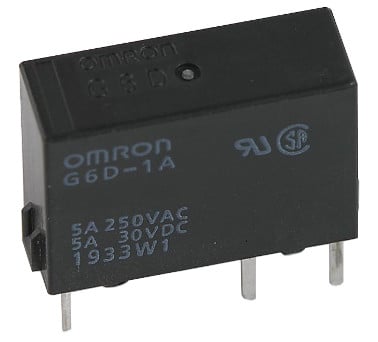
Omron G6D SPST Relay
A slim, miniature relay capable of relaying programmable controller and temperature controller outputs. Ideal for output applications of control equipment.
Features included:
- Washable construction
- Ideal for high-density mounting
- Switches 5 A at 250 VAC/30 VDC
- Actual load switching capability equals the G6B’s capability
- Allows 300,000 operations with a 2-A load at 250 VAC or 30 VDC
SPDT PCB Relay 12VDC
Product code: RE1312
This 10A PCB relay provides high process security and is heat and fire-resistant. It can provide excellent protection for your electrical equipment. Suitable for household appliances, office machines, audio equipment, automobiles, and more.
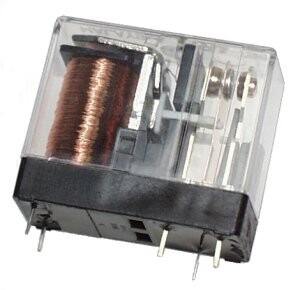
SPDT PCB Relay 5VDC
Product code: RE1306
A compact unit that provides high process security and is heat and fire-resistant. Often found in white goods, small home appliances, and heating and temperature controllers.
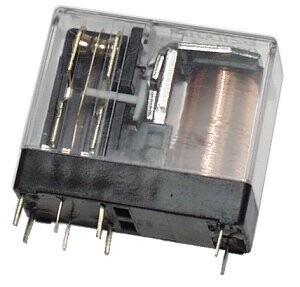
DPDT PCB Relay 12VDC 8A Contacts
Product code: RE1311
This is a non-latching DPDT PCB relay with an 8A contact rating to power your electrical circuit.
The Bottom Line
Using PCB power relays is critical, not just because they provide safety features. But they also help keep your systems organised and efficient.
You can instead have one reliable power relay powering everything. So say goodbye to having tons of wires, which can be difficult to manage without risks! On top of that, they also protect users from harsh electric hazards.
© Wiltronics Research Pty Ltd 2023
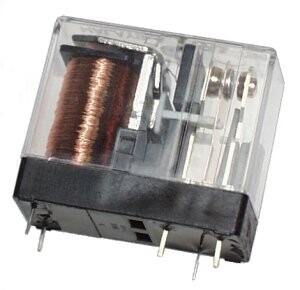
Write a Comment
You must be logged in to post a comment.